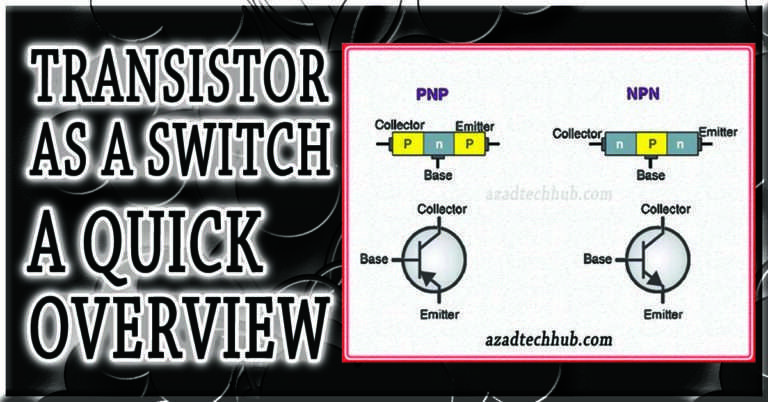Wemos D1 Mini Pinout: A Complete Guide
The Wemos D1 Mini is a small, versatile, and affordable development board based on the ESP8266 WiFi microcontroller. This board is particularly popular for IoT projects due to its WiFi capabilities, compatibility with Arduino IDE, and small size.
Understanding the Wemos D1 Mini pinout is essential for leveraging its full potential in various projects. In this article, we’ll take an in-depth look at the Wemos D1 Mini pinout, exploring its functions and applications.

Table of Contents
Key Specifications of the Wemos D1 Mini
Before diving into the pinout, let’s briefly review the Wemos D1 Mini specifications:
- Microcontroller: ESP8266
- Operating Voltage: 3.3V
- Digital I/O Pins: 11
- Analog Input: 1 (0-3.3V)
- Flash Memory: 4MB
- WiFi Connectivity: Yes
These features make the Wemos D1 Mini an excellent choice for small IoT projects where size and WiFi capabilities are critical.
Wemos D1 Mini Pinout Overview
The Wemos D1 Mini has a total of 16 pins, including power pins, digital pins, and an analog pin. Here is an overview of the main pin categories:
1. Power Pins
The power pins on the Wemos D1 Mini provide options to power the board and interface with other components.
- 3V3: Outputs 3.3V from the on-board regulator, typically used to power low-voltage sensors or modules.
- G: This is the ground pin (GND), essential for creating a common ground in circuits.
- 5V: The 5V pin provides direct 5V from the USB input, which can be used to power components that require higher voltage. Note that the Wemos D1 Mini itself operates at 3.3V, so using the 5V pin directly to power the board can cause damage.
2. Digital Pins
The Wemos D1 Mini has 11 digital I/O pins labeled D0 to D8. These pins can be configured as either input or output, making them versatile for various applications.
- D0 (GPIO16): A general-purpose pin that does not support PWM or I2C communication, commonly used for simple digital input or output tasks.
- D1 (GPIO5) and D2 (GPIO4): Often used for I2C communication. D1 is typically used as SCL (clock), and D2 is used as SDA (data) in I2C-based projects.
- D3 (GPIO0): Used as an input/output pin but should be used carefully as it’s linked to the boot mode.
- D4 (GPIO2): Also connected to the on-board LED, which allows for easy debugging and testing.
- D5 (GPIO14), D6 (GPIO12), D7 (GPIO13), and D8 (GPIO15): Often used for SPI communication in projects requiring fast data transfer, like interfacing with SD cards or displays.
3. Analog Pin
The A0 pin on the Wemos D1 Mini is the only analog input pin available on this board, with a voltage range of 0 to 3.3V. This pin is generally used to read analog sensors, such as temperature sensors or light sensors. Note that the voltage input should not exceed 3.3V, as higher voltages can damage the board.
Wemos D1 Mini Pinout Details
To better understand how each pin functions, here is a breakdown of each pin on the Wemos D1 Mini pinout and their main purposes:
| Pin | GPIO | Function |
|---|---|---|
| D0 | GPIO16 | General-purpose I/O |
| D1 | GPIO5 | SCL (I2C clock) |
| D2 | GPIO4 | SDA (I2C data) |
| D3 | GPIO0 | I/O with boot mode caution |
| D4 | GPIO2 | On-board LED control |
| D5 | GPIO14 | SPI CLK |
| D6 | GPIO12 | SPI MISO |
| D7 | GPIO13 | SPI MOSI |
| D8 | GPIO15 | SPI CS |
| A0 | A0 | Analog input (0-3.3V) |
Common Applications of Wemos D1 Mini Pins
Using Digital I/O Pins
The digital I/O pins on the Wemos D1 Mini are highly versatile and can be used to control LEDs, motors, and other digital devices. For example, by using the D4 pin, you can control the built-in LED, which is helpful for status indicators and testing purposes.
I2C Communication with Sensors
Pins D1 (GPIO5) and D2 (GPIO4) on the Wemos D1 Mini pinout support I2C communication, a protocol used for connecting low-speed peripheral devices like sensors and displays. By configuring D1 as SCL and D2 as SDA, you can easily connect the board to various I2C-based modules, making it a popular choice for sensor-rich IoT projects.
SPI Communication for High-Speed Interfaces
SPI (Serial Peripheral Interface) is a protocol designed for fast communication, commonly used with sensors and memory cards. The Wemos D1 Mini uses D5, D6, D7, and D8 pins for SPI communication, enabling efficient data transfers with components like SD cards, which are often used for data logging.
Analog Input for Reading Sensors
The analog input A0 pin allows the Wemos D1 Mini to interface with analog sensors. This pin reads values from 0 to 3.3V, enabling it to measure varying signals from sensors such as light-dependent resistors (LDR) or thermistors. It’s ideal for applications requiring real-time monitoring of environmental data.
Sample Wiring Diagrams for Wemos D1 Mini
Here are some example wiring diagrams to help you connect components to the Wemos D1 Mini effectively:
1. Connecting an LED
To connect an LED to the D4 pin:
- Connect the LED’s positive (longer leg) to D4.
- Connect the LED’s negative (shorter leg) to a resistor (e.g., 220Ω) and then to the ground (G pin). This setup allows you to control the LED using code by sending high or low signals to the D4 pin.
2. Connecting an I2C Temperature Sensor
To connect a temperature sensor like the BMP180 (an I2C device):
- Connect the sensor’s VCC pin to the 3.3V pin on the Wemos D1 Mini.
- Connect the sensor’s GND to the ground (G pin).
- Connect the sensor’s SCL to D1 and SDA to D2. This setup lets the Wemos D1 Mini communicate with the sensor using I2C protocol.
Programming the Wemos D1 Mini
The Wemos D1 Mini can be easily programmed using the Arduino IDE, making it accessible for beginners. To get started:
- Install the ESP8266 Board Manager in Arduino IDE.
- Select Wemos D1 R2 & Mini under Board settings.
- Connect the Wemos D1 Mini via USB, and upload your code.
With simple commands in Arduino, you can control LEDs, read sensor values, and establish WiFi connections using the Wemos D1 Mini pinout.
Important Notes on Using the Wemos D1 Mini Pinout
- Voltage Caution: Always ensure that the input voltage does not exceed 3.3V for analog inputs or GPIOs.
- Current Limits: The ESP8266 microcontroller has specific current limitations, so avoid connecting high-power components directly to the board.
- Boot Mode Pins: Be cautious when using pins D3 and D4, as they are connected to the boot mode and can interfere with programming if configured incorrectly.
Conclusion
The Wemos D1 Mini pinout offers a range of functionalities that make it ideal for IoT and sensor-based projects. With 11 digital I/O pins, an analog pin, and compatibility with I2C and SPI protocols, the Wemos D1 Mini is both versatile and compact, suitable for various applications. By understanding the functions of each pin and knowing how to connect components effectively, you can harness the full potential of this powerful microcontroller board.
Worth Read Posts
Follow us on LinkedIn, “Electrical Insights,” to get the latest updates on electrical engineering. You can also Follow us LinkedIn and Facebook to see our latest posts on Electrical Engineering Topics.
#WemosD1Mini, #D1MiniPinout, #ESP8266, #IoTDevices, #ElectronicsProjects, #Microcontroller, #PinoutGuide, #ArduinoProjects, #MakerCommunity, #DIYElectronics, #SmartHomeTech, #TechTutorial, #WemosBoard, #ElectronicsGuide, #ESP8266Projects





Thanks for the detailed guide! The pinout diagram is super helpful for my projects. I appreciate the clear explanations for each pin functionality—it really clarifies everything. Keep up the great work!
Great guide! The pinout diagrams are super helpful for my current project. I appreciate the detailed explanations for each pin. Thanks for putting this together!
Great post! The detailed pinout diagrams and explanations are super helpful for working with the Wemos D1 Mini. I appreciate how clearly everything is laid out—it makes it so much easier to plan my projects. Thanks for sharing this comprehensive guide!
Great post! The detailed pinout diagram and explanations are incredibly helpful for anyone working with the Wemos D1 Mini. I especially appreciate the tips on using the analog pins. Keep up the good work!